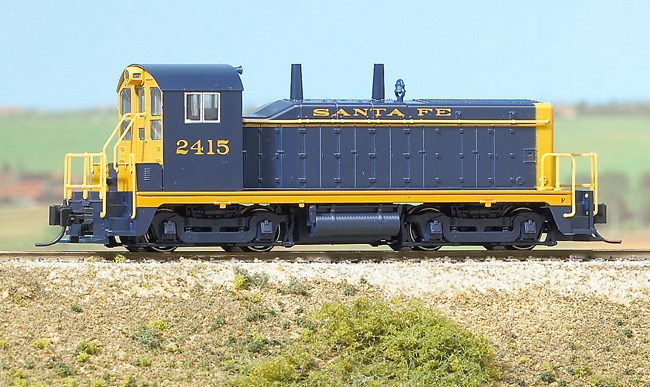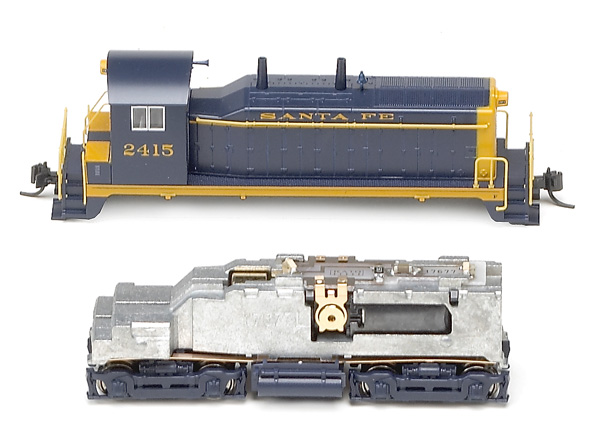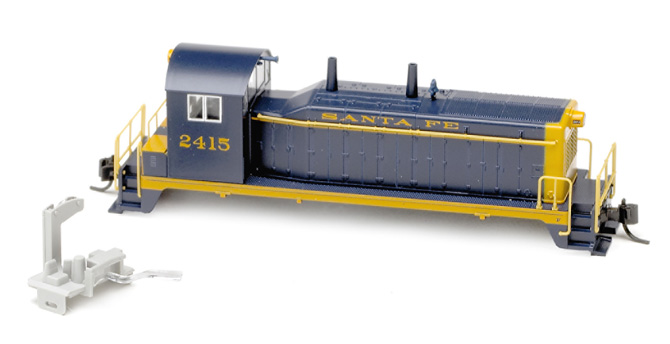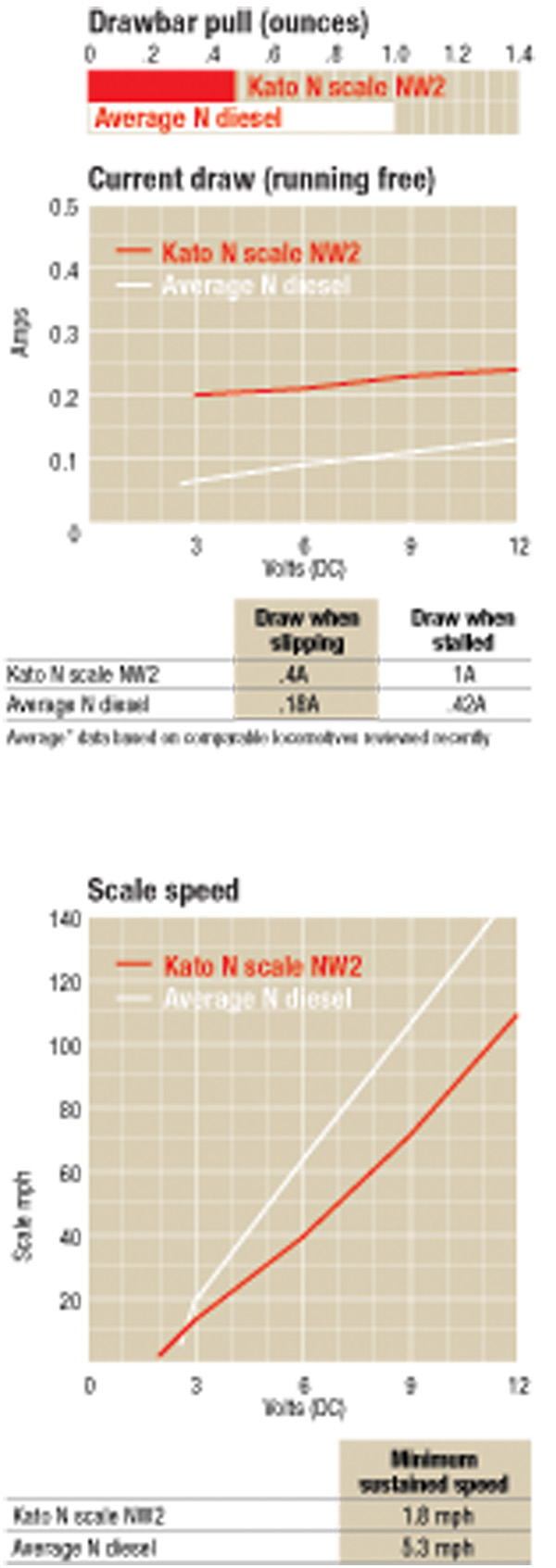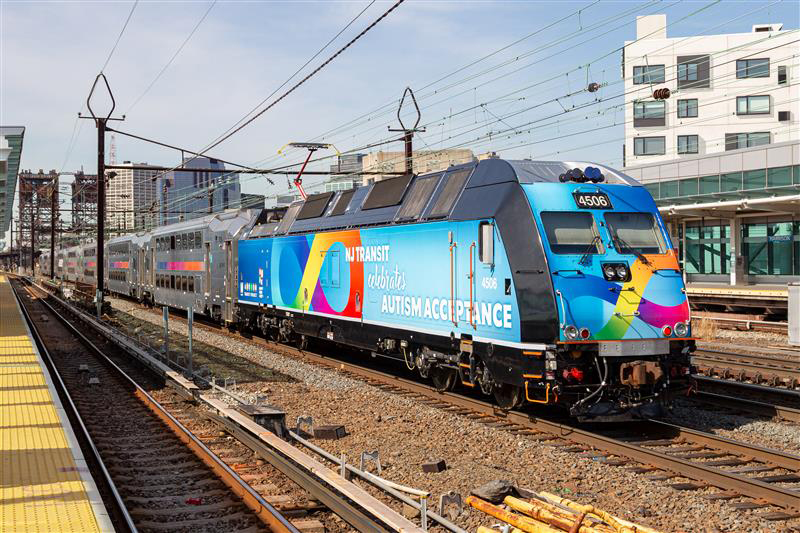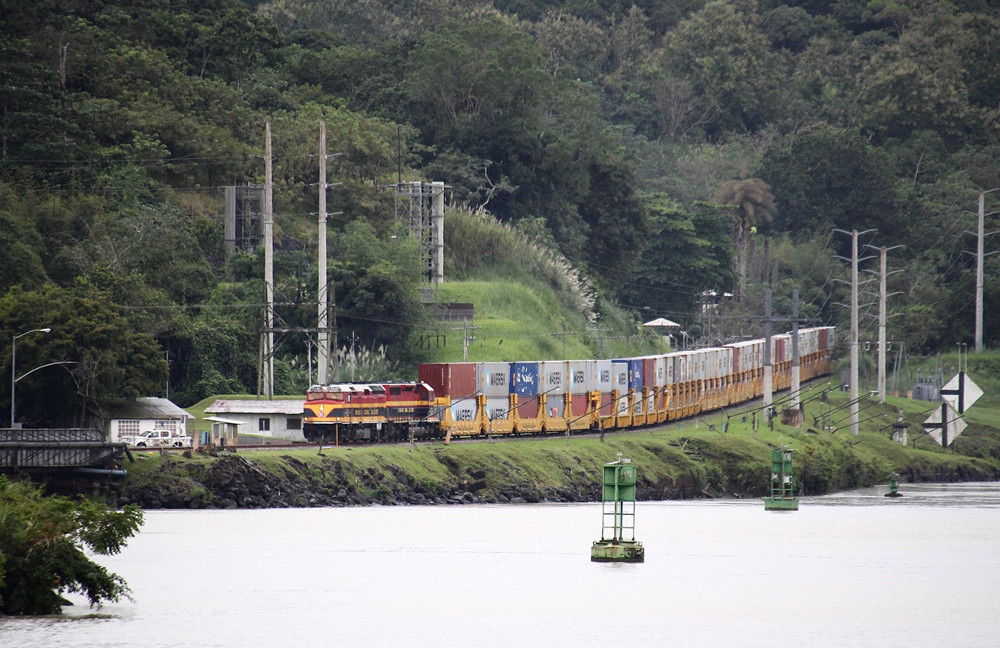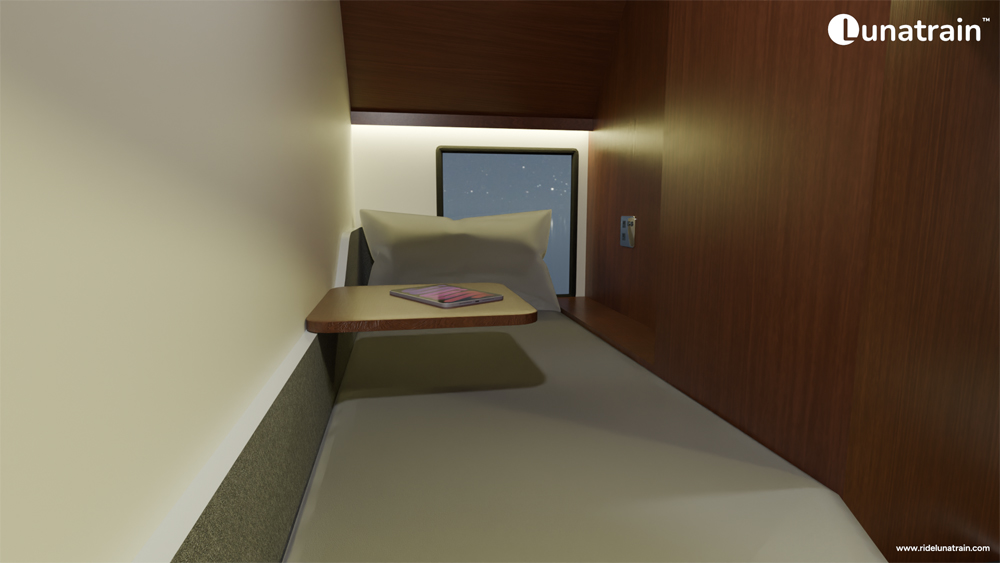Diesels come of age. The switch engine represented by this model was built in 1939, during the first phase of the NW2’s 10-year production run. Appearing at a time when steam still held sway, the NW2 paired the high-visibility cab design pioneered by EMC in 1936 with that company’s 1,000 hp 12-cylinder 567 engine. The 125-ton NW2 was also the first Electro-Motive locomotive to be built with the company’s own generators, traction motors, and electrical control system. Prior to the NW2, all EMC locomotives were built with Westinghouse or General Electric components.
Even the most steam-smitten of master mechanics must have been impressed by the NW2’s cost savings of 50 percent on maintenance and 80 percent on fuel when compared to steam switchers. Production was suspended for two years during the Second World War, but a total of 1,143 NW2s had been sold when production ended in 1949, making it EMD’s all-time best-selling switcher.
Switch engines tend to be durable beasts, and although their Class 1 railroad days largely ended in the 1970s, a great many NW2s continue to earn their keep in daily service with short lines and rail-served industries.
The model has the key spotting features of an early production NW2, including a double-step taper where the hood meets the cab, and plain hood access doors. (Late-production NW2s are identified by side louvers in the hood’s access doors and a single straight-slope hood taper.)
The model has the correct Association of American Railroads (AAR) type B switcher trucks with solid bearings.
Large, flush-fitting windows in the cab show off the interior details. A cleverly concealed light-piping arrangement illuminates the rear headlight without intruding into the cab’s interior.
The only user-installed parts are trip pins that easily press-fit into the body-mounted Kato magnetic couplers. One of the pins promptly fell out when I set our sample on the track. A very tiny drop of glue set it right.
The dark blue paint is evenly applied on our sample, although the yellow paint of the nose is slightly fuzzy where it meets the blue of the body. The lettering is crisp and opaque. The handrails, made of acetal plastic, are impressively thin but are a slightly lighter shade than the model’s Santa Fe yellow paint. The model’s fuel tank, trucks, and underbody should be black to match the prototype.
Atchison, Topeka & Santa Fe is the only road name offered in the initial run. If Kato’s past practice is any guide, additional road names will soon be available.
The drive mechanism is a new design for Kato. The motor and single flywheel are offset to the front and mounted above a central gear box equipped with twin drive shafts connected to gears on the trucks. As with many recent Kato locomotives, each axle is individually sprung.
The mechanism is extremely compact, and the locomotive operates smoothly at slow speeds. The Kato NW2 started at 1.9 volts and crept along at less than 2 mph without cogging. At 12 volts, the engine hit 109 mph, far above the prototype’s 60 mph gearing.
Pulling power was a modest .48 ounce, equal to about 11 cars on straight, level track. The switcher pulled a nine-car train around 93/4″ curves with just a hint of wheel slip. The wheels on the Kato NW2 have a mirror finish and will probably get more grip on the rails once this plating has worn a bit.
With fine details and impressive slow-speed performance, the Kato NW2 is an excellent replica of an important transition-era locomotive.
Price: $100
Manufacturer
Kato U.S.A. Inc.
100 Remington Rd.
Schaumburg, IL 60173
www.katousa.com
Description
Plastic ready-to-run diesel
locomotive
Road name
Atchison, Topeka & Santa Fe
Cab interior
Can motor with single flywheel
Constant, directional yellow-white light-emitting diode (LED) headlights and illuminated preprinted number boards
Drawbar pull: .48 ounce
Eight-wheel drive and pickup
Individually applied grab irons
Kadee-compatible body-mounted magnetic couplers (mounted at correct height)
RP-25 contour nickel-silver wheels (mounted in gauge)
Weight: 2 ounces





